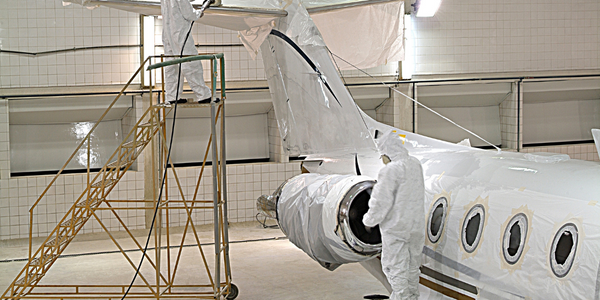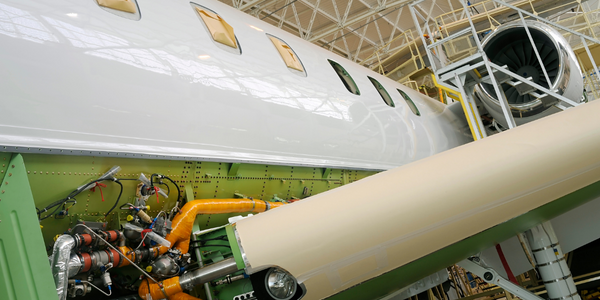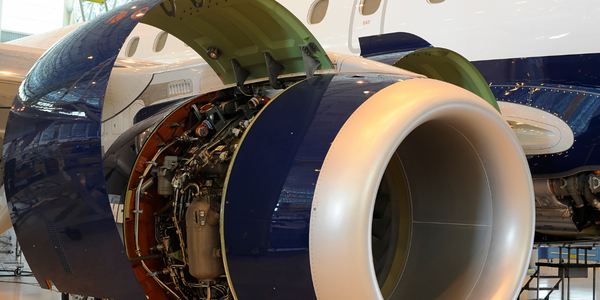Customer Company Size
Large Corporate
Country
- United States
Product
- GoDirect Trade
- Hyperledger Fabric
Tech Stack
- Blockchain
- E-commerce
Implementation Scale
- Enterprise-wide Deployment
Impact Metrics
- Revenue Growth
- Productivity Improvements
- Customer Satisfaction
Technology Category
- Application Infrastructure & Middleware - Blockchain
- Application Infrastructure & Middleware - Data Exchange & Integration
Applicable Industries
- Aerospace
Applicable Functions
- Procurement
- Sales & Marketing
Use Cases
- Supply Chain Visibility
- Track & Trace of Assets
Services
- System Integration
- Software Design & Engineering Services
About The Customer
Honeywell Aerospace is a division of Honeywell International, a multinational conglomerate that produces a variety of commercial and consumer products, engineering services, and aerospace systems. Founded in 1914, Honeywell Aerospace is now a global provider of avionics, engines, systems, and services. Its products and services touch virtually every aircraft in the world and in space. In 2018, the company reported sales of $12.9 billion. Honeywell Aerospace is committed to improving the buying and selling experience in the aerospace industry, as demonstrated by its creation of the GoDirect Trade platform.
The Challenge
Honeywell Aerospace, a global provider of avionics, engines, systems, and services, wanted to create an Amazon-like marketplace for used aircraft parts. The existing process of purchasing used aircraft parts was outdated and time-consuming, often taking days or even weeks to complete a transaction. The websites put up by vendors were basic and lacked crucial information such as a part’s condition, pricing, and availability. The main challenge was the lack of trust in online transactions due to the heavily regulated nature of the aviation industry. Each part sold required certification from the U.S. Federal Aviation Administration and other agencies, and each part must be documented with a complete history of its ownership, use, and repairs. The goal was to cut purchasing time from days or weeks down to seconds and to connect each physical part to its digital pedigree.
The Solution
Honeywell Aerospace set up a modern-looking and secure B2B marketplace for used aircraft parts called GoDirect Trade. The marketplace was modeled on popular e-commerce sites, and every transaction was recorded on an immutable blockchain built with Hyperledger Fabric. The blockchain records allowed buyers to view vital data on many parts, such as the entire lifecycle of a part, the number of hours it was in service, any and all repairs made and by who, when and where, and all previous owners of the part. Honeywell developed a middleware layer on top of Hyperledger Fabric, and the marketplace apps were designed to work with major other blockchains such as Ethereum or R3’s Corda. The network currently includes five validating nodes running Hyperledger Fabric version 1.4 deployed on Honeywell enterprise cloud and other commercial clouds. To preserve data security, the system uses channels and private data collections.
Operational Impact
Quantitative Benefit

Case Study missing?
Start adding your own!
Register with your work email and create a new case study profile for your business.
Related Case Studies.

Case Study
Airbus Soars with Wearable Technology
Building an Airbus aircraft involves complex manufacturing processes consisting of thousands of moving parts. Speed and accuracy are critical to business and competitive advantage. Improvements in both would have high impact on Airbus’ bottom line. Airbus wanted to help operators reduce the complexity of assembling cabin seats and decrease the time required to complete this task.

Case Study
Aircraft Predictive Maintenance and Workflow Optimization
First, aircraft manufacturer have trouble monitoring the health of aircraft systems with health prognostics and deliver predictive maintenance insights. Second, aircraft manufacturer wants a solution that can provide an in-context advisory and align job assignments to match technician experience and expertise.

Case Study
Aerospace & Defense Case Study Airbus
For the development of its new wide-body aircraft, Airbus needed to ensure quality and consistency across all internal and external stakeholders. Airbus had many challenges including a very aggressive development schedule and the need to ramp up production quickly to satisfy their delivery commitments. The lack of communication extended design time and introduced errors that drove up costs.

Case Study
Accelerate Production for Spirit AeroSystems
The manufacture and assembly of massive fuselage assemblies and other large structures generates a river of data. In fact, the bill of materials for a single fuselage alone can be millions of rows of data. In-house production processes and testing, as well as other manufacturers and customers created data flows that overwhelmed previous processes and information systems. Spirit’s customer base had grown substantially since their 2005 divestiture from Boeing, resulting in a $41 billion backlog of orders to fill. To address this backlog, meet increased customer demands and minimize additional capital investment, the company needed a way to improve throughput in the existing operational footprint. Spirit had a requirement from customers to increase fuselage production by 30%. To accomplish this goal, Spirit needed real-time information on its value chain and workflow. However, the two terabytes of data being pulled from their SAP ECC was unmanageable and overloaded their business warehouse. It had become time-consuming and difficult to pull aggregate data, disaggregate it for the needed information and then reassemble to create a report. During the 6-8 hours it took to build a report, another work shift (they run three per day) would have already taken place, thus the report content was out-of-date before it was ever delivered. As a result, supervisors often had to rely on manual efforts to provide charts, reports and analysis.

Case Study
Developing Smart Tools for the Airbus Factory
Manufacturing and assembly of aircraft, which involves tens of thousands of steps that must be followed by the operators, and a single mistake in the process could cost hundreds of thousands of dollars to fix, makes the room for error very small.








